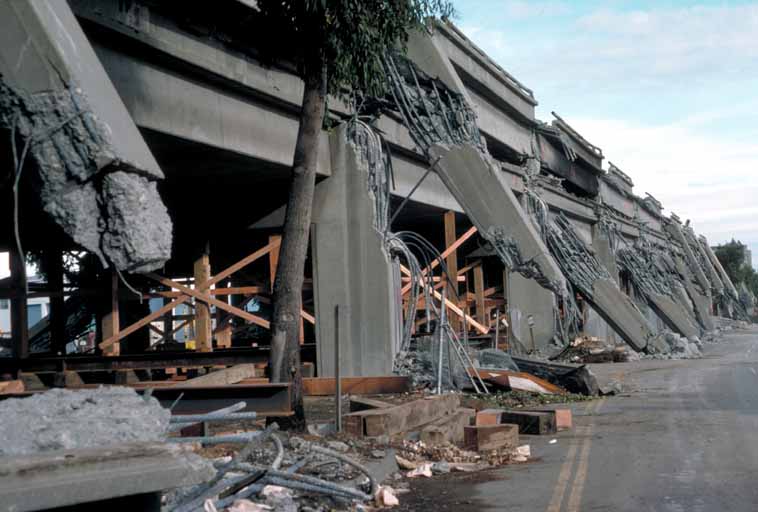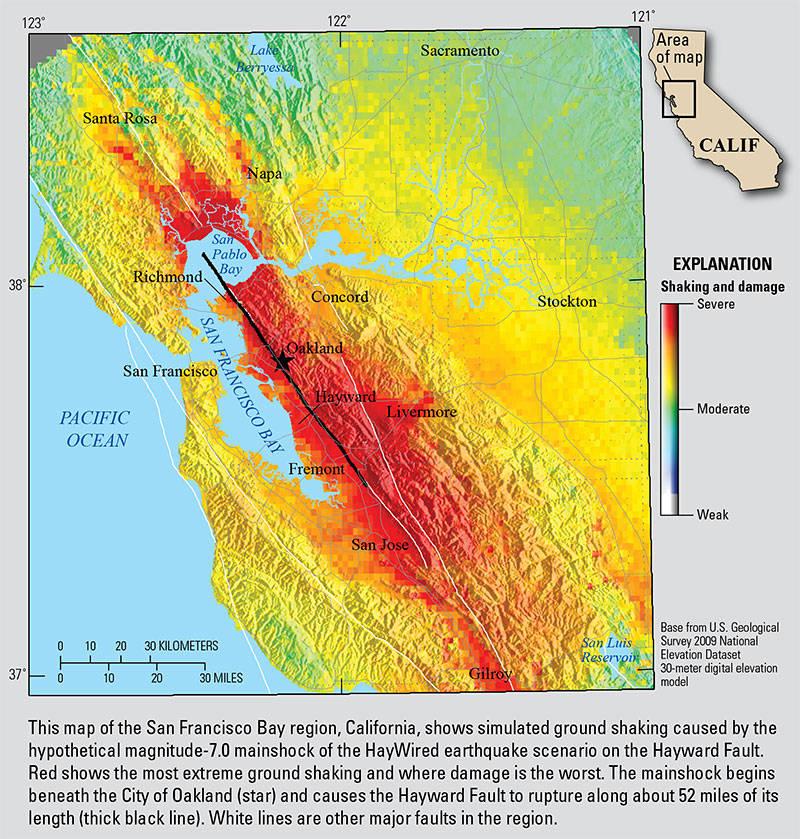A new report from the U.S. Geological Survey says a major earthquake on the Oakland section of the Hayward fault could kill hundreds of people and injure thousands.
The USGS report out today examined what could happen in the likely scenario of a 7.0 quake. Similar large earthquakes have occurred on the Hayward fault every 100-220 years for nearly two millennia, and last happened 150 years ago.
The scenario imagines an earthquake centered in Oakland, happening at 4:18 p.m. on the same day as the 1906 San Francisco earthquake: today, April 18.
The quake ruptures the fault for 52 miles, from Fremont to the middle of San Pablo Bay. It causes violent shaking from Richmond to Fremont, killing 800 people from building and structural collapse and damage, and injuring 18,000 people.
In the scenario, roughly 2,500 people need to be rescued from collapsed buildings, and 22,000 people are trapped in elevators.


